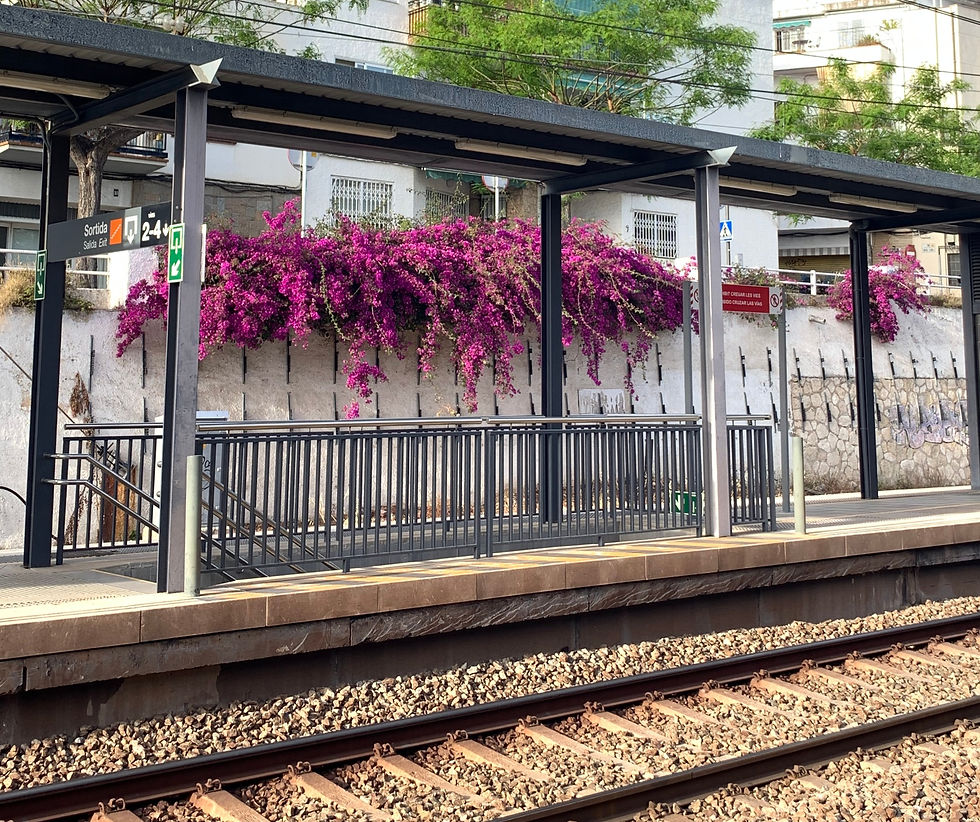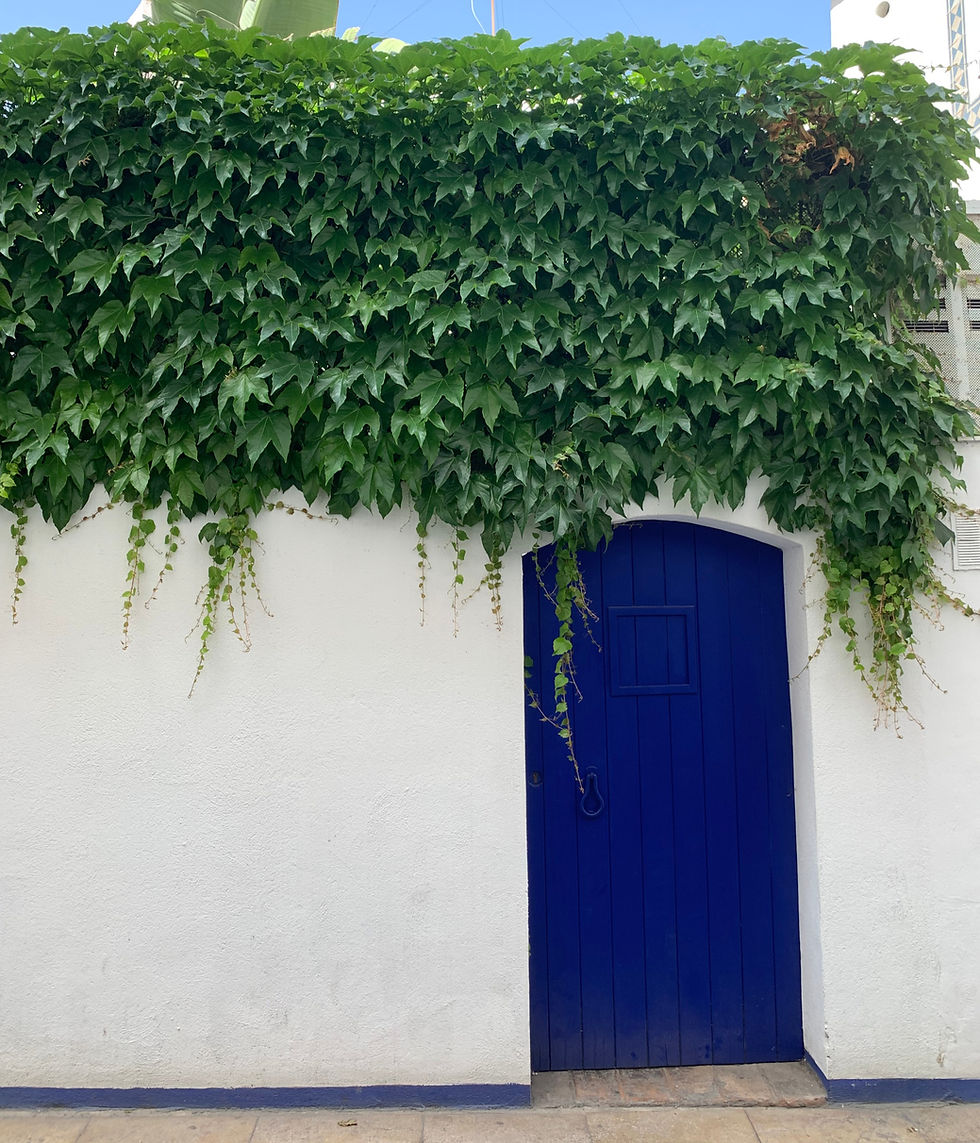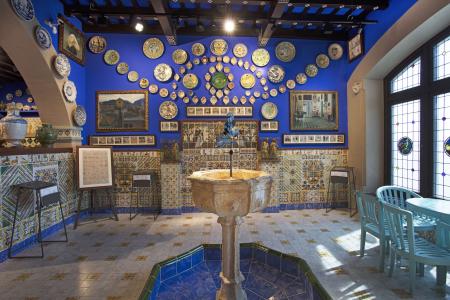Sitges: The Must-See Sunny Shore Town
- jessicaseldner5592
- Jun 3, 2022
- 5 min read
Updated: Jun 4, 2022
How would you like to spend a day walking through charming architecture or having fun in the sun on beautiful beaches? You could have the best of both worlds in the coastal Spanish town of Sitges.
Just a quick 30-minute train ride away from Barcelona, the town of Sitges sits in a beautiful area that looks straight out of a postcard. This town has been called "the St. Tropez of Catalonia." This picturesque paradise is located in the Catalonia region of Spain and it is a known safe haven for the LGBT+ Community. Hugged by the Garraf Massif mountain range, you could go surfing and hiking all in one day.
Let's find out more about the hidden (and not-so-hidden) wonders that this place has in store for you.

History
Let's start with how this popular travel destination came to be.
People have lived in this area since the Neolithic Period (12,000-6,500 years ago). However, a Neanderthal jaw bone was discovered in the 1950s, proving that the area was inhabited as early as the Middle Paleolithic Period or Middle Stone Age (300,000-35,000 years ago).
Settlement in the first century began with two villages that were eventually overtaken by the Romans. After that, archaeological remains show that the area was occupied continuously from the sixth century BC to the first century AD.
In the 12th century, the Sitges Family officially gained control of the area. In 1308, the last of the Sitges family line, Agnes of Sitges, sold the rights of the town to Bernat de Fonollar. He was the general attorney of Catalonia and King James II's right-hand man. Fonollar became the most important man in Sitges' medieval history, possessing the Castle of Sitges as well as the rest of the town.

Without an heir, Fonollar's death passed ownership of the castle and territory of Sitges onto the Pia Almoina. This charitable institution was run by the See of Barcelona. This organization controlled the town until 1814. The town entered an era of isolation, which ended in the 1880s with the arrival of the railroad.
Two key events helped to transform Sitges into the place to be. Famous Spanish artist Santiago Rusiñol visited the town and turned it into the cultural epicenter of the Modernista movement. Charles Deering, an American millionaire, brought notability and radical change to Sitges by building the Palau Maricel. This is one of Sitges' most emblematic buildings.
Sightseeing

Once you get off the train to Sitges, you will be greeted by a bright sunny environment fit with narrow walkways that wind between tall residential buildings. Residents stand on their balconies smoking or watering their plants. What is the first thing on your mind?
If you want to indulge in the town's trademark tourist attraction, hit the beach! Several of the beaches in Sitges have been awarded a blue flag from the European Union as recognition for the cleanliness of their water.
One thing to keep in mind is it is not uncommon for people to go topless or completely nude on beaches in Spain. In Sitges, many beaches are family-friendly. The nudist beaches are: Cala Morisca, Balmins Beach, Playa Desenrocada, and Playa de l'Home Mort. A view from the shore is featured in the video below.
Ava Corbyn is on vacation with her two sons. She came from the United Kingdom to spend a family weekend in Sitges.
"We just went to the beaches by the main promenade. It was great -- the boys loved the water."
Beach days are welcome and accessible for everyone, whether you want them to be family-friendly or free to bare all.
If a day spent in the sand and sea isn't your thing, you can check out local museums or the iconic church. The museums mentioned are featured from left to right in the gallery below.
The Palace of Maricel is a beautiful masterpiece that has designated rooms filled with gorgeous robust architecture and a spectacular view of the water.
The Cau Ferrat Museum was built in 1893 by Rusiñol as a home studio to work on and store his paintings and drawings as well as his personal collection of ancient ceramic, glass, and sculpted art.
The Maricel Museum (which is different from the palace) is an exhibition of Sitges' artistic journey. It begins with pieces from the tenth century and ends with the first half of the 20th century.
The Can Llopis Romantic Museum is a grand mansion that once belonged to the Llopis family. It was one of the most important families in Sitges, a line of landlords, wine merchants, lawyers and diplomats. It was converted into a museum and opened to the public in 1949. This site is temporarily closed for repairs, but it is set to reopen next year.

Standing tall and gallant behind one of the town's many piers, the Church of Saint Bartolomeu and Saint Tecla is a 17th-century gothic church that has become a symbol of Sitges. There are many alluring features of the architecture that are worth the visit. Also, this site is filled with history. Canons embedded in the wall helped to defend the town from invaders. Its two tall bell towers overlook the sea.
As far as nightlife goes, some of the best bars to visit in town are: El Piano, La Cova and Everlasting Love. El Piano is known for its great atmosphere and standout live musical performances. La Cova is designed to look like a cave, which is definitely a unique and other-worldly experience. Everlasting Love is a charming disco bar modeled after the Saturday Night Fever aesthetic.
Sitges' Gay Community
A very important facet of this town's identity is its gay community. Spain as a country is already rather progressive in legislation regarding the LGBT+ Community. "LGBT Discrimination" was outlawed in 1995. Additionally, same-sex marriage and same-sex adoption have been legal since 2005. In Sitges, there is not only acceptance but also outward pride. It is known as one of the most liberal and welcoming places for gay people.

Théo Morin has worked as a host and waiter at the restaurant Fragata for two years.
"It's the gay capital of Europe. That's the exact reason why I left France and came here."
He and his boyfriend have lived in Sitges since 2018. When asked about how comfortable he feels showing affection in public, he said, "I've always seen it as a welcoming place. My boyfriend and I go to the beach almost every day and have never had a problem."

Fun Facts About Sitges
The town hall is built on top of the remains of an eleventh-century castle.
The town has 17 sand beaches.
The first beach bar in Spain opened in Sitges, it's called Chiringuito, a nickname meaning a small bar on the beach selling drinks and tapas.
Bacardi Rum was founded by Facundo Bacardi, who was born in Sitges.
The beach called De la Bossa Rodana is known as the most popular "gay beach."
The first racing circuit in Spain was built in Sitges in 1922. It is called the Sitges-Terramar circuit.











Comments